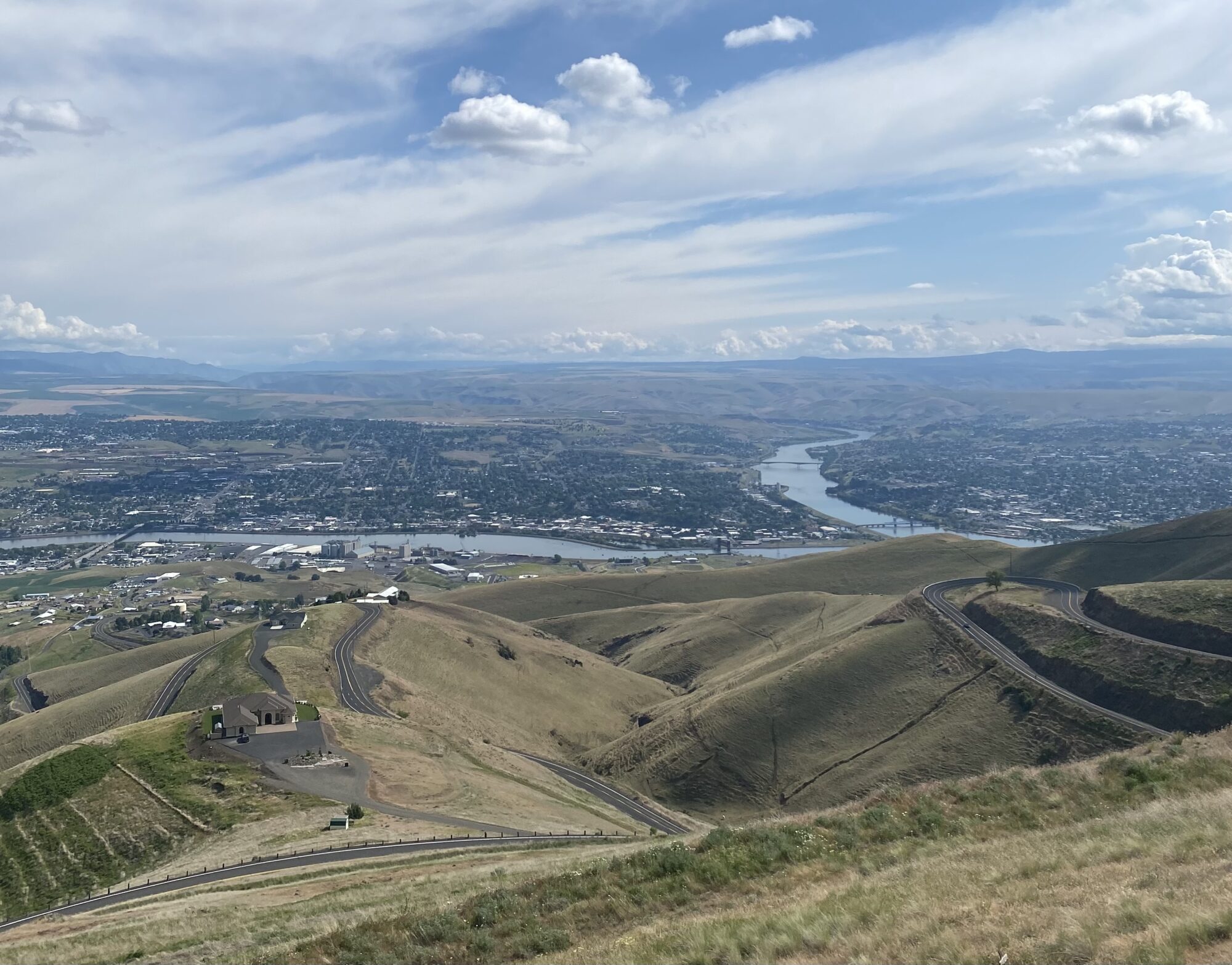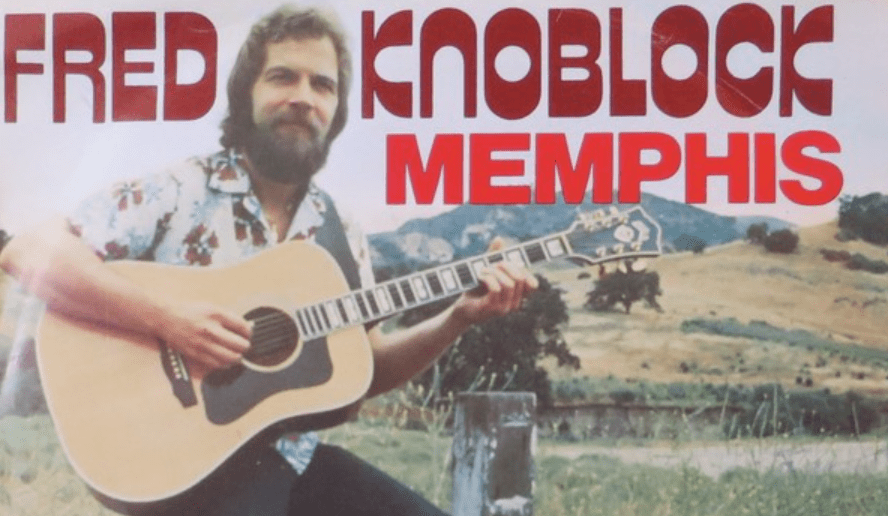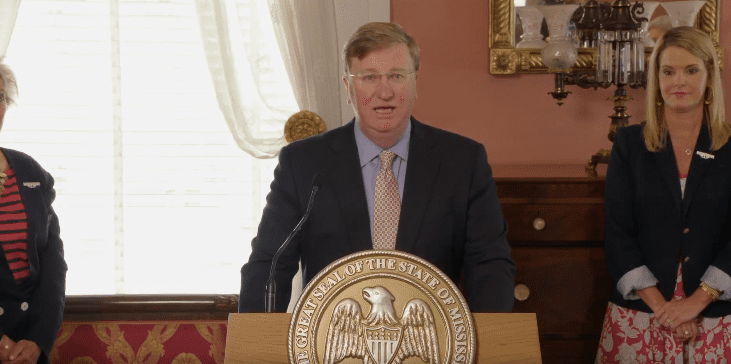
- Visitors to the largest of Mississippi’s state parks can enjoy camping, swimming, hiking and more.
Tucked into the extreme northeast corner of the state, Tishomingo State Park is a nature wonderland with camping, swimming, boating, hiking, and disc golf. It is the largest of Mississippi’s 25 state parks, spanning 1530 acres. Reserve America rates the nation’s 4000 campgrounds, and seven of Mississippi’s state parks rank in the Top 100, including Tishomingo State Park.
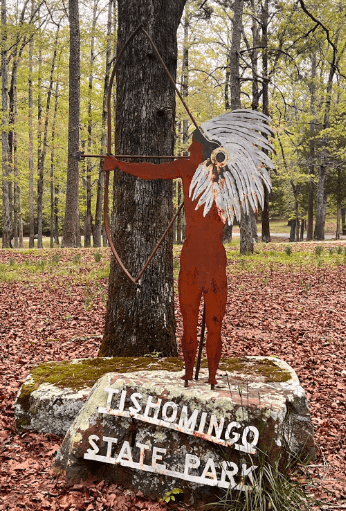
The historic park has an interesting history. Most of the land was purchased by the Tishomingo County Board of Supervisors in 1935 from Standard Realty in Jackson. The land was initially bought in the early 1900s by North Mississippi Traction Company for the purpose of quarrying the abundant native stone (the park is situated in the foothills of the Appalachian Mountains). Their ultimate plan was to dam Bear Creek to produce electricity to power a railroad from Indian Creek on the Tennessee River through Iuka to the town of Tishomingo. The company failed, but their established land base and rights-of-way made the purchase by the supervisors easier.
The County continued to buy land from area landowners at six dollars an acre, funded by raising land taxes twice in 1935. The land, 1385 acres at the time, was then deeded to the state for the park.
All of this occurred on the heels of the Great Depression. In 1933, President Franklin D. Roosevelt established the Civilian Conservation Corp. The CCC was part of his New Deal legislation aimed at combating high unemployment at the time. Three million young men were put to work between 1933 and 1942 on environmental conservation projects under the guidance of the U.S. Forest Service, the National Park Service, and the Departments of the Interior and Agriculture. The CCC workers, ranging in age from 17 to 25, built wildlife refuges, facilities to raise fish, water storage basins, and more. To encourage citizens to get out and enjoy our country’s natural resources, FDR authorized the CCC to build bridges and campground facilities.
My husband and I made the four-hour trip from Madison to Tishomingo State Park recently and spent a couple of nights in one of the cabins. Like most of the buildings at Tishomingo State Park, the six cabins were built by CCC workers in the late 1930s. Workers were paid $30 a month, but only received $5, as the rest was sent home to help their families survive the Great Depression. The U.S. Army was in charge of the camp which housed 200 young men who worked under the park superintendent with the National Park Service overseeing the projects.

Tishomingo State Park is a destination place. The area is very rural. The closest place to get supplies of any kind is a Dollar General several miles down the road. The closest town is Tishomingo, which has limited food offerings. You can get some gas station fried chicken, visit one of the local diners, or do as we did and visit the Mexican restaurant. Luckily we packed a cooler and our cabin had a small kitchen.
We were assigned to Cabin Three. We checked in at the park’s gate house and got our keys. It was a three-mile drive on a winding wooded road, speed limit 15. We found the stone cabin with no problems. It was situated in a clearing in the woods, and had a fire pit, grill and picnic table outside. We entered our cabin through the screened-in porch. The cabin seemed cozy enough – a living room with a kitchenette on one side, a bedroom with two queen-sized beds, and a small but functional bathroom. Bed linens and towels were provided, as was a coffee pot complete with a complimentary bag of coffee from Beanfruit Coffee Company in Jackson.
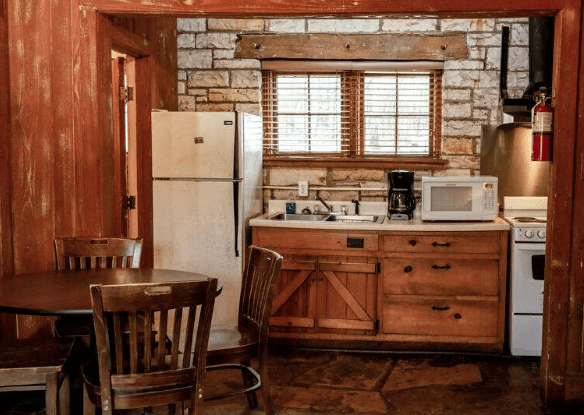
While comfortable, the cabin was more rustic than I am used to. No television. No Wi-Fi. Just the sounds of nature surrounding us. But we settled in and got used to the quiet. Instead of having our noses stuck to our phones, we talked with each other. We sat back and listened to the birds, frogs, crickets and other woodland critters.
We slept well the first night and ventured out into the park the next morning. Our first stop was the Swinging Bridge. The suspension bridge that spans Pennington Creek was completed by the CCC in 1939. The cable holding the bridge was retrieved from the Tennessee River after Tennessee Valley Authority’s construction of Pickwick Dam. The archways on either side of the bridge were built of native stone. Signs warned that no more than five people should be on the bridge at one time.
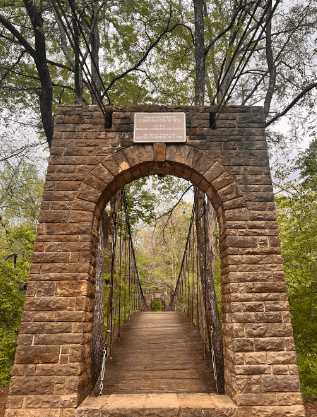
Lucky for us, no one else was around when we ventured across the bridge. (True confession: I got a bit anxious. That bridge is not for the faint of heart.) It does swing some, and it is suspended high above the fast-moving creek. One charming aspect was the many locks attached to the cables – much like those at the Pont des Arts bridge in Paris where lovers once placed locks on the bridge to show their affection toward one another.
This is a very family-friendly park. Not far from the bridge is a swimming pool, a playground, and nature center that is currently being renovated.
Centered within the park is Haynes Lake, built in the 1960s. The picturesque lake is dotted with campgrounds for both tents and campers. The 45-acre lake is an ideal fishing spot. We saw several canoes and kayaks on the lake while we were there.
Then Natchez Trace bisects the park. The Trace was once a trail used by Native Americans as well as travelers returning home after rafting goods down the River to New Orleans in the 1800s. The last warrior chief of the Chickasaws, Tishomingo, enjoyed hunting and fishing in the area.
Tishomingo is a hiker’s dream with thirteen miles of trails. There are seven distinct trails that differ in length but are all easy to moderate walking. Trails are marked by red blazing painted on trees or the plastic trail markers in shapes and colors assigned to each trail. Each trail differs in vegetation and terrain. Hikers here can enjoy seeing large rock outcroppings, beautiful spring-fed streams, as well as a plethora of flora and fauna.

We stopped in at the park’s gate house where we met Phil Seymour, the park manager, who is originally from Ocean Springs. Phil returned to college later in life with dreams of working for Mississippi Wildlife, Fisheries, and Parks. He was hired last year, and assigned to work at Tishomingo State Park, which is Phil’s idea of heaven. “I love it here,” he says. “If I could, I’d be out on those trails all day.” Phil is an avid disc golfer, and he is working to update the disc golf course at the park.
Phil pointed out that there are events held at the park year-round. He recently held a “Coffee Talk with the Park Manager” where people could sample the “Mornin’ Sipp” coffee from BeanFruit and discuss all things park related. He also held an “Intro to Disc Golf” session to explain the basic terms, strategy, rules, disc types, flight patterns, and gear.
On May 11, a “Tent Camping 101” session will be held to see different tent types, lighting, sleeping bags and systems, cleaning and care for equipment, and outdoor cooking options. A special bonus will be hammock camping.
Camper’s worship services are held each Sunday at 8:30am in the Bobby E. Cobb Pavillion in the park, a ministry of the Tishomingo County Baptist Association.
While I’ve never been described as an “outdoorsy” person, I did enjoy our stay at the park. It was great to unplug and enjoy nature, and the park is stunningly beautiful. I can see why I’ve heard great things about it from many of my friends. I encourage folks to get out of their comfort zone and explore the beauty of our own home state.
There is an active Friends of Tishomingo State Park group – you can see their Facebook page here.






